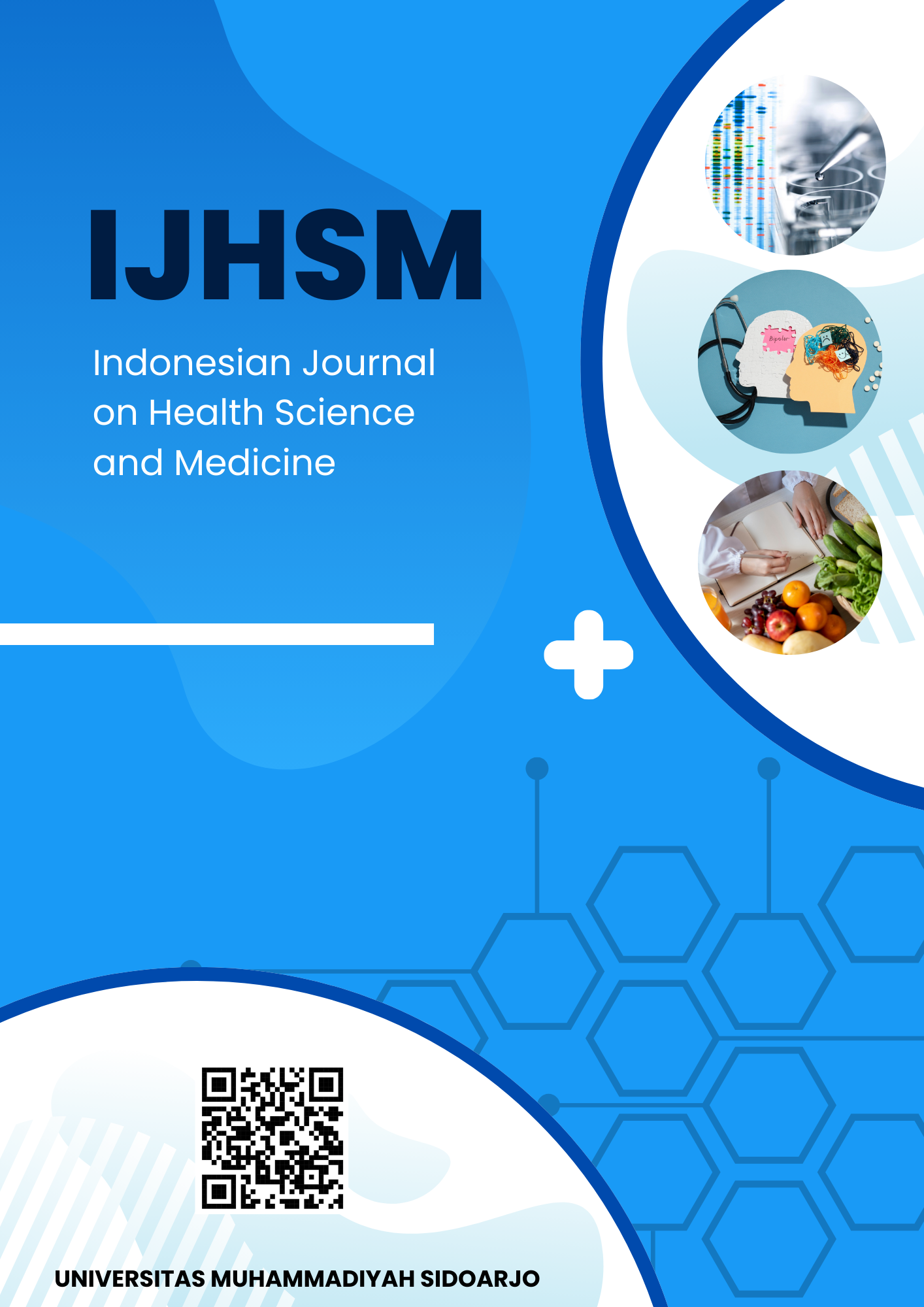Why Cancer Cells Crave Sugar: A Review
Mengapa Sel Kanker Sangat Membutuhkan Gula: Sebuah Ulasan
DOI:
https://doi.org/10.21070/ijhsm.v2i1.139Keywords:
cancer, cells, crave, sugarAbstract
In addition to causing weight gain, eating too much sugar raises the risk of obesity and diabetes, both of which raise the chance of cancer. It turns out that while eating sugar does not always cause cancer, it can cause the disease because of the way it affects your waist. Sugar is necessary for cancer cells to survive, not to proliferate and divide. Although this sugar is absorbed by all bodily tissues, it is more readily absorbed by tissues with higher energy requirements, such as cancer cells. Because of this, some people have concluded that sugar accelerates the growth of cancer cells. "I'd be shocked if cutting back on sugar didn't help lower the risk of cancer," she says. "High-fructose corn syrup, which is found in soft drinks, sweetened teas, sports drinks, and processed meals, as well as in candy, cookies, ice cream, and sweetened breakfast cereal, should be avoided.
Highlights:
- Excess sugar raises obesity and diabetes risk, increasing cancer risk.
- Cancer cells absorb more sugar due to higher energy needs.
- Avoid high-fructose corn syrup in processed and sugary foods.
Keywords: cancer, cells, crave, sugar
References
[1] Nihon Kyobu Geka Gakkai Zasshi, “Pulmonary Resection for Lung Cancer with Brain Metastasis,” Jpn. J. Thorac. Surg., vol. 40, no. 3, pp. 382–386, Mar. 1992.
[2] D. R. Plas et al., “Regulation of AKT Kinase Activity and Substrate Phosphorylation in Cells by ATP and PIP3,” Cancer Res., vol. 51, no. 13, pp. 3507–3511, Jul. 1991.
[3] M. G. Vander Heiden et al., “Understanding the Warburg Effect: The Metabolic Requirements of Cell Proliferation,” Cancer Res., vol. 65, no. 3, pp. 999–1006, Feb. 2005.
[4] H. T. Cui, Q. Y. Zhu, H. W. Zhao, H. L. Liu, and N. Wang, “Pregnancy Is Associated with the Prognosis of Ovarian Cancer Patients with Abdominal Metastasis,” Am. J. Cancer Res., vol. 15, no. 1, p. 168, Jan. 2025.
[5] N. J. Temple, “Fat, Sugar, Whole Grains and Heart Disease: 50 Years of Confusion,” Nutrients, vol. 10, p. 39, 2018, doi: 10.3390/nu10010039.
[6] E. Chazelas et al., “Sugary Drink Consumption and Risk of Cancer: Results from NutriNet-Santé Prospective Cohort,” BMJ, vol. 366, p. l2408, 2019, doi: 10.1136/bmj.l2408.
[7] M. A. Fuchs et al., “Sugar-Sweetened Beverage Intake and Cancer Recurrence and Survival in CALGB 89803 (Alliance),” PLOS ONE, vol. 9, p. e99816, 2014, doi: 10.1371/journal.pone.0099816.
[8] N. Makarem, E. V. Bandera, J. M. Nicholson, and N. Parekh, “Consumption of Sugars, Sugary Foods, and Sugary Beverages and Cancer Risk: A Systematic Review of Longitudinal Studies,” Annu. Rev. Nutr., vol. 38, pp. 17–39, 2018, doi: 10.1146/annurev-nutr-082117-051805.
[9] California State University Northridge (CSUN), “What Is Cancer?,” CSUN.edu, 2010. [Online]. Available: https://www.csun.edu/~. [Accessed: Apr. 25, 2025].
[10] K. A. Schneider, Counseling About Cancer: Strategies for Genetic Counseling, 3rd ed. Hoboken, NJ, USA: John Wiley & Sons, 2011.
[11] O. Bukhtoyarov and D. Samarin, “Pathogenesis of Cancer: Cancer Reparative Trap,” J. Cancer Ther., vol. 6, pp. 399–412, 2015, doi: 10.4236/jct.2015.65043.
[12] J. Yu, A. L. Blackford, M. dal Molin, C. L. Wolfgang, and M. Goggins, “Time to Progression of Pancreatic Ductal Adenocarcinoma from Low-to-High Tumor Stages,” Gut, vol. 64, pp. 1783–1789, 2015, doi: 10.1136/gutjnl-2014-308653.
[13] J. Ferlay, F. Bray, P. Pisani, and D. M. Parkin, Cancer Incidence, Mortality and Prevalence Worldwide, Version 1.0, Lyon, France: IARCPress, 2001.
Downloads
Published
How to Cite
Issue
Section
License
Copyright (c) 2025 Dina H. Sadiq

This work is licensed under a Creative Commons Attribution 4.0 International License.





